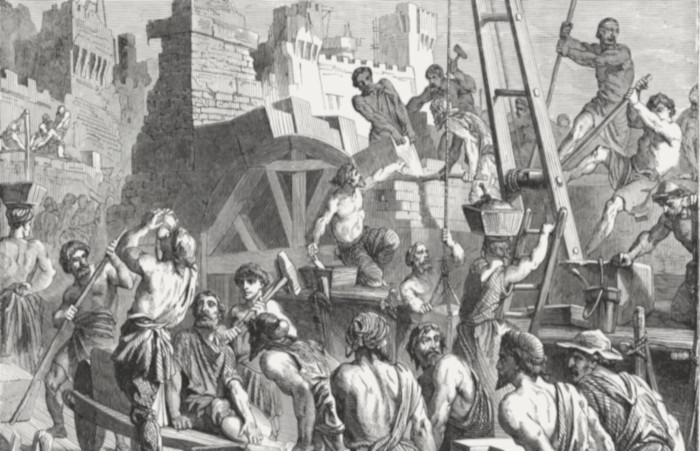Ezra
Introduction
 The book of Ezra covers the return of some of the exiles to Jerusalem. Please refer to these resources as well: this commentary, the NETS Bible, and this LXX Interlinear.
The book of Ezra covers the return of some of the exiles to Jerusalem. Please refer to these resources as well: this commentary, the NETS Bible, and this LXX Interlinear.
Analysis
Ezra begins with the decree of King Cyrus of Persia to allow exiled Israelites to return to Judea and rebuild Solomon’s temple, as predicted by the prophet Jeremiah. If you’re familiar with the book of Daniel, you know that the Babylonian empire ruled by Nebuchadnezzar was taken over by the Medes and Persions, so the seventy-year exile is ending at this point. Had many of today’s Christians been alive during this first exile, they would have interpreted prophecies of return as purely spiritual or allegorical.
Ch. 2 is a list of those returning, and notice that in verse 62 there were some priests who would not be permitted to serve as such until their lineage could be determined. Though the Promise to Abraham still stood, and anyone could be a convert, the priesthood required genetic descent from Levi.
Skipping to ch. 4, we see that there was opposition to this rebuilding project from people of Samaria who were partly related to the Israelites. They begin by saying they to want to help, but the help is refused so they keep doing whatever they can to hinder the reconstruction, including sending letters to Babylon warning of possible rebellion and loss of tax revenue.
However, this appears to have reached the king after the temple was finished, so the work they want to stop is on the city walls, and the king grants their request. Our lesson so far is that even when God answers our prayers with a “yes”, it doesn’t mean we won’t face any obstacles, because testing is one of the purposes of this life.
Ch. 5 is the text of the letter they sent to the king, and ch. 6 tells us that King Darius the Persian searched out the original order to rebuild the temple, which clearly permitted the temple’s reconstruction― including death by impaling for anyone who would try to change the order. According to the commentary, it was finished in early 515 b.c., fulfilling the prophecy of seventy years from when Nebuchadnezzar destroyed it. This one would stand until 70 a.d.
Ch. 7 is when the scribe Ezra leaves Babylon for Jerusalem, to teach the law to the Israelites there. Ch. 8 lists the others who went with him, ch. 9 is Ezra’s prayer of confession and repentance for the nation. and ch. 10 is when the people repent with him.
But notice starting in verse 14 that any who had married foreign wives had to send them away. Nothing is said about provisions for the divorced wives, but remember that Levite from an earlier lesson who threw his concubine to a violent mob of rapists? Marriages were less about love than property.
So the book of Ezra is mostly the account of prophetic fulfillment, the proof of God’s authorship of the scripture, and his control the historical events.

